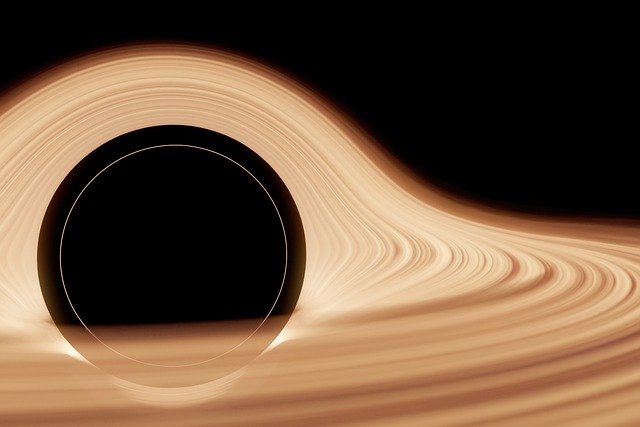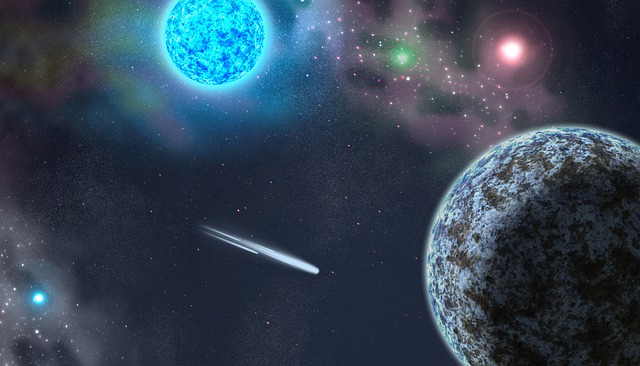*This post may contain affiliate links. This means we may make a commission if you purchase an item using one of our links*
The main difference between a black dwarf and black hole is that black dwarfs are theorised to be the end cycle of a white dwarf whilst black holes are the product of a large star dying in a supernova explosion forming a dense, disc like dark vacuum that allows no light to escape it and can even warp time and space around it.
For a more thorough breakdown of both celestial objects, from their similarities to their differences, continue reading.
What Is A Black Hole?
Table of Contents

A black hole is created when a large star collapses below its Schwarzschild radius causing a supernova explosion. They require a minimum of 3 – 4 solar masses of materials to form. Once the process begins the density of the star creates a massive gravitational pocket and pulls everything within its vicinity into it.
The edge of a black hole is known as the event horizon and once something crosses this point, there is no escape. The gravitational pull of a black hole is so immense that even light is sucked inside.
All objects pulled in are subjected to an unimaginable crushing gravitational force as they are pulled toward the super dense end point of the black hole known as the singularity.
Black holes can be split into a variety of different types such as a supermassive black hole, intermediate mass black hole, and stellar mass black hole.
Stellar mass black holes are formed as described above by the death of a large star collapsing inward on itself. An intermediate mass black hole is slightly larger than a stellar mass black hole and may form be acquiring stars within its reach although not many have been discovered so little is still known about them.
A supermassive black hole can be found at the center of a galaxy and consumes stars and smaller black holes in order to obtain its massive size – millions of times larger than our Sun.
What Is A Black Dwarf?

Black dwarfs are stars that have reached the end of their life cycle. This also means that the black dwarf status is what all white dwarf stars will theoretically become once they have run out of their energy resources.
In theory black dwarf stars are very small stellar remnants of stars, specifically white dwarfs, that achieve the end of their life cycle where they will emit insignificant heat or light. This in turn would make them practically undetectable.
According to astronomer Ethan Siegwl, it could take upwards of a quadrillion years for the first white dwarf to go dark.
Therefore, even if black dwarfs are the theorised final stage of stellar remnants, it may never be something we truly uncover, unlike other interstellar bodies that we’ve already like neutron stars or black holes.
As they’re essentially dead white dwarfs, black dwarfs would practically be the same size as them, projected to be roughly 5,000 to 10,000 km in diameter, and are likely to be similar in density too.
For reference an Earth sized black dwarf star would be roughly 200,000 times more dense than the Sun, practically invisible and undetectable due to the lack of light produced and ice cold at 5 degrees kelvin or -268 °C.
With that being said, this is what the theoretical black dwarf would look like so, until we legitimately observe one in the cosmos, we’ll never truly know if these celestial objects will actually match the figures our modern day scientists have hypothesised.
Similarities Between Black Holes And Black Dwarfs
The main similarities between the two is that black holes and black dwarf are both said to be very cold, and dense, the remnants of dead stars and on the darker side where they would be virtually undetectable.
Both are also said to live for an uncountable amount of time, possibly even longer than our universe as some theories have suggested could die as early as 22 billion years from now.
With that being said the differences are more vast than the similarities.
Differences Black Holes And Black Dwarfs
In regards to what the differences between black holes and black dwarfs are, they include the following:
- Black holes are produced when a really large star dies in a supernova leaving behind a minimum of 3 solar masses in materials whereas black dwarfs are the final theoretical phase of a white dwarf, which are formed when a smaller star the size of our Sun dies.
- Black holes have the ability to dilate and warp time whilst black dwarfs cannot .
- Black dwarfs are typically 5,000 -10,000km in diameter whereas black holes can be far smaller to billions of km depending on where they’re located (in open space or at the centre of a galaxy).
- Black holes are as close to absolute zero in temperature as anything can be whilst black dwarfs are around 5 degrees kelvin or -268°C.
- No light can escape the center of a black hole whilst black dwarfs do not dissipate light if its drawn to it.
Summary
Black dwarfs and black holes are both the end phase for stars where black dwarfs become as such after a white dwarf stops emitting light whilst black holes are the final phase of any larger stars that collapses into itself, so intensely that the epitome of darkness forms and effects its own surroundings.

